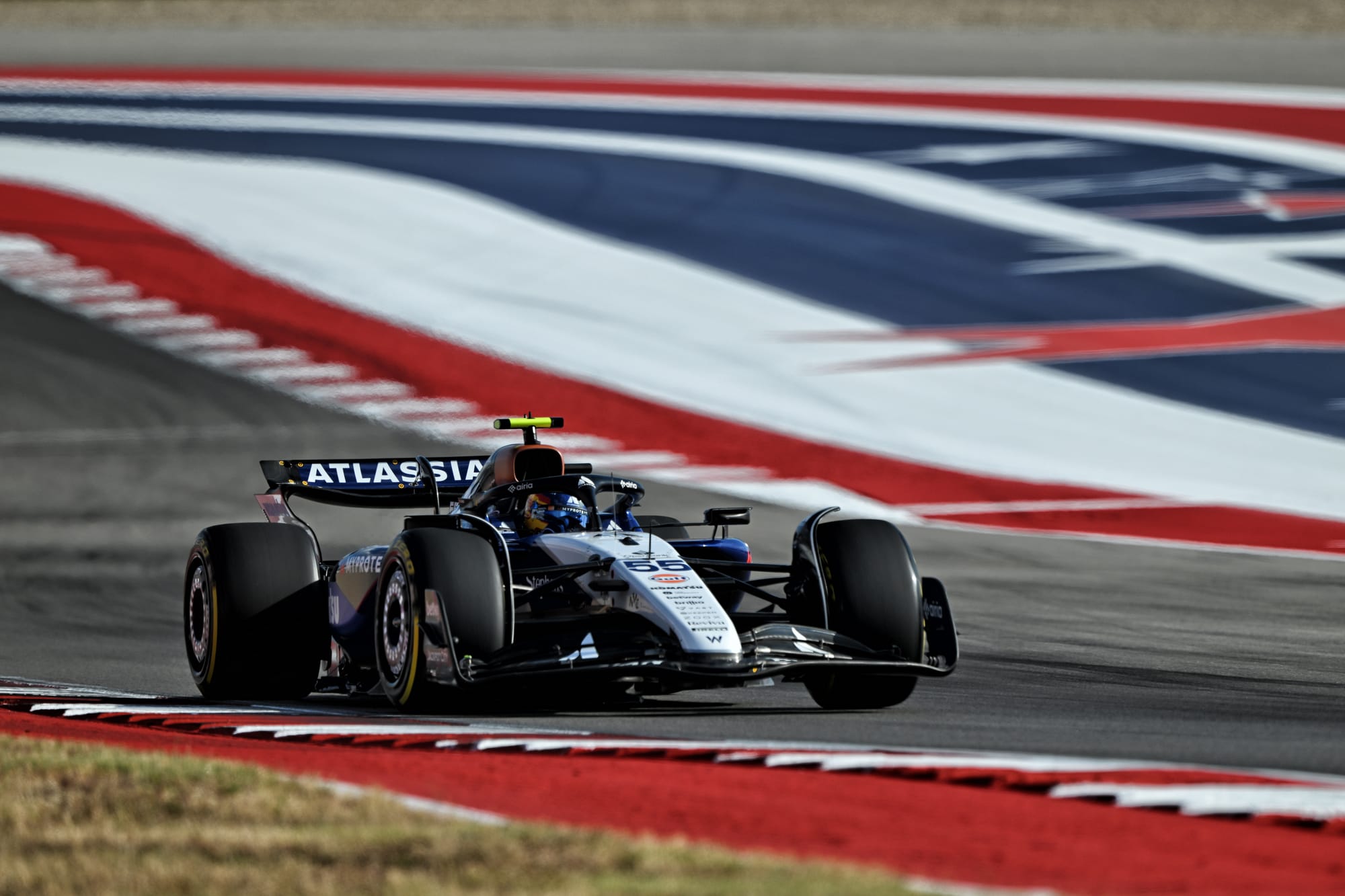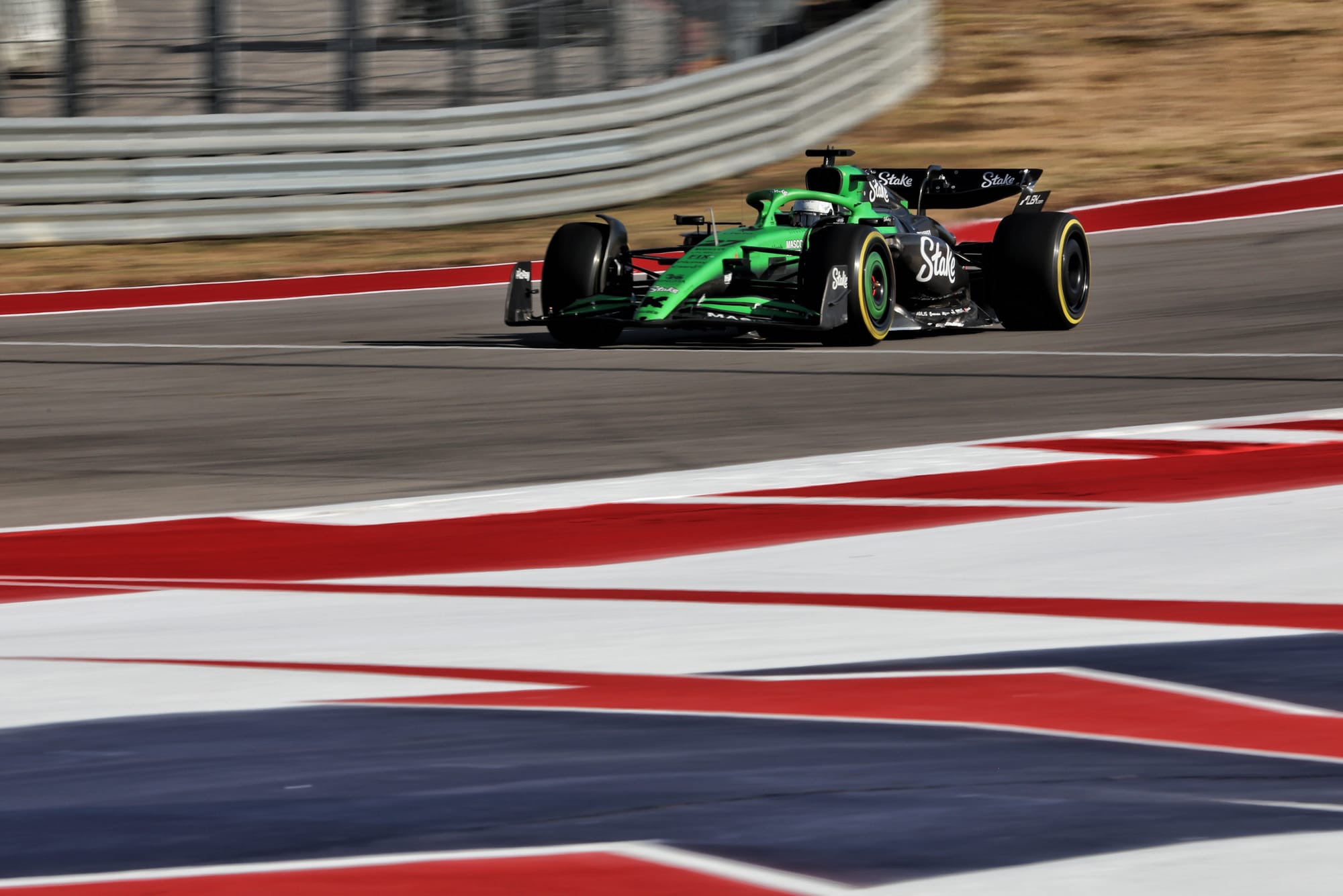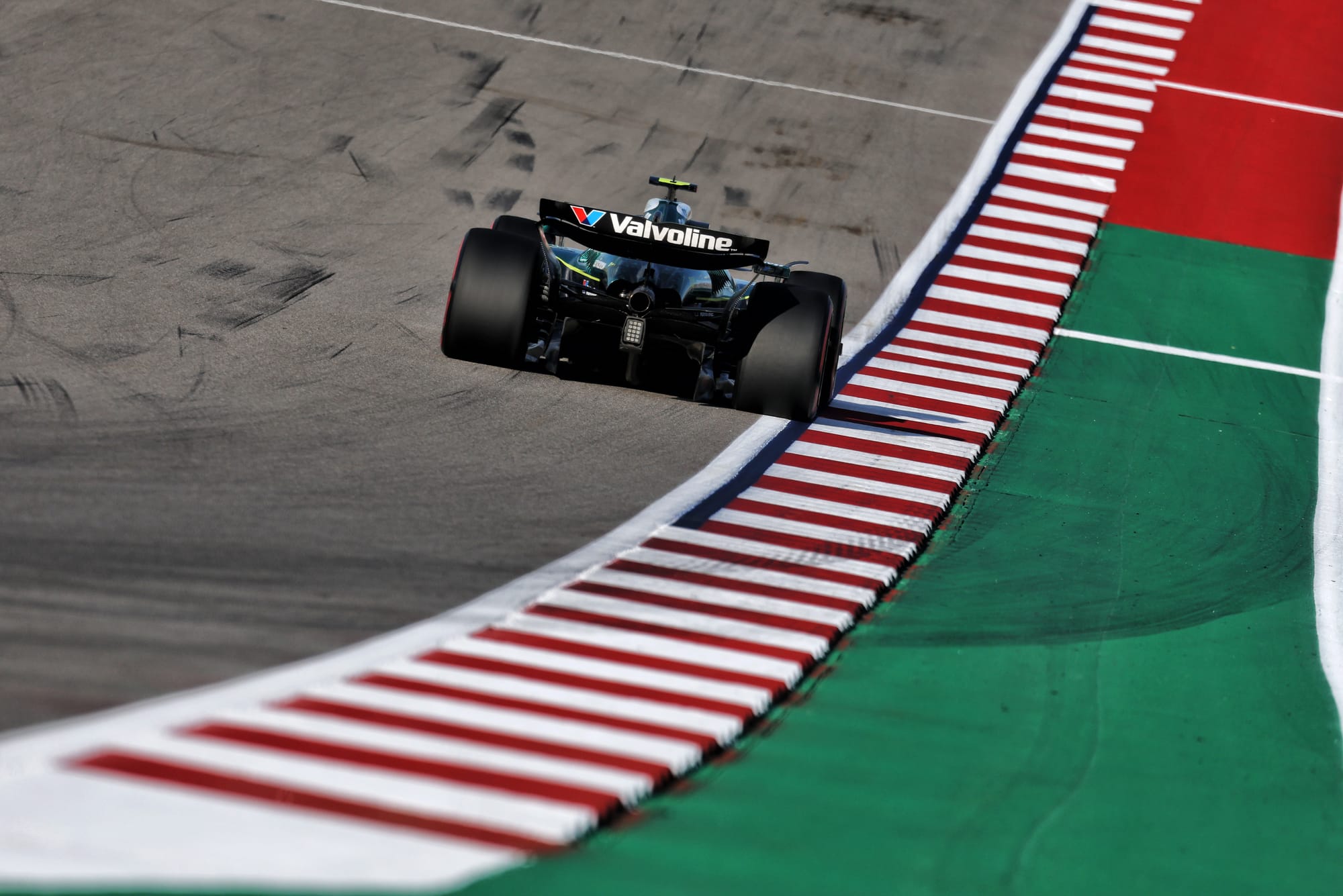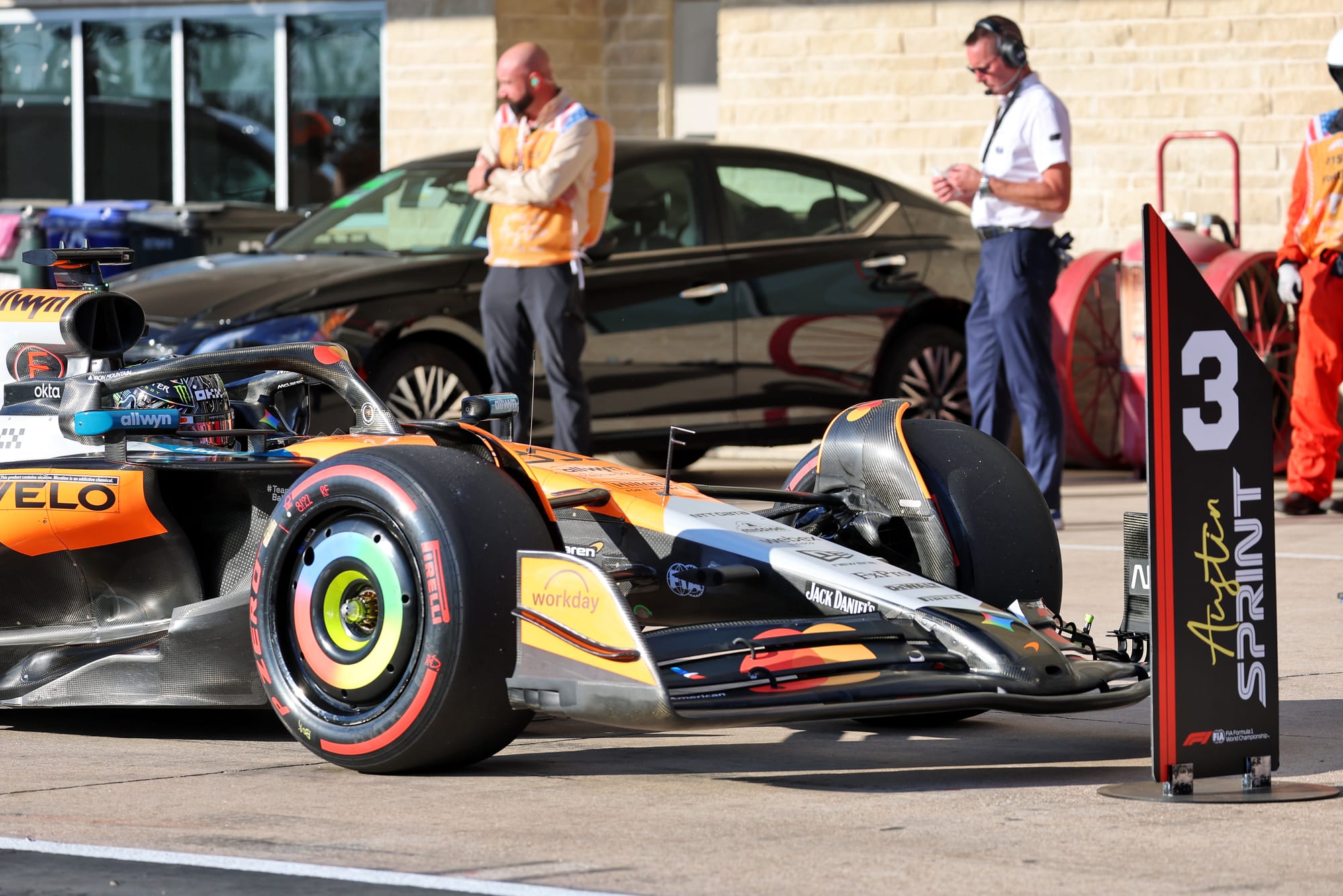Formula 1's mixed up sprint grid at the United States Grand Prix – with a Sauber, an Aston Martin and two Williams troubling the big four teams – is intriguing.
This was not just a case of Nico Hulkenberg's sensational fourth for Sauber being an isolated moment of genius. Instead, Fernando Alonso's Aston Martin in sixth and Williams helping shuffle Ferrari back to eighth and 10th pointed to something more fundamental being at play.
As Carlos Sainz, who slotted his Williams into seventh, said: "It's weird. We see a couple of midfield cars mixing it up with the top teams here.
"Fernando and Nico have been quick since practice. I managed to put myself also in the mix there.
"So yeah, I don't understand why at such a tough track, and such a high downforce track, suddenly midfield cars are battling the top seven, the top eight."

Sainz was not the only one chasing answers because after another difficult day for Ferrari, Charles Leclerc reckoned that Hulkenberg's performance with a customer Ferrari engine was something that his team needed to understand.
"It is very surprising the teams that are very strong this weekend, apart from obviously the McLaren and the Red Bull, which is expected," admitted Leclerc.
"You've got Nico in front who has done probably an amazing lap, but he's been consistently fast this weekend. So we just need to understand if they understood something that we didn't."
Hulkenberg himself, who has had his fair share of qualifying struggles in recent races, could not offer any magic bullet explanation for what happened – beyond finding a Sauber underneath him that was very quick from the off.
"Obviously, in FP1, things were looking good already," he said. "But it kind of looked too good to be true. So, we weren't sure if that's the real deal or what other people were up to with their programme.
"The pace was just there. The car seemed to be fast here and in a good window. We kind of, you know, hit the sweet spot. And I think that's all."
The ride-height sweet spot

That final comment about the 'good window' may, however, give us the best clue about why there has been such a variation from the norm in terms of the performance pattern this weekend – and it could all relate to ride heights.
It is well understood that the current generation of cars are super sensitive in terms of how close to the ground they run – as all the juicy downforce can be found when they are as low down as possible.
The trick is finding the sweet spot between going as low as you dare, but without it making the floor strike the ground so much you wear your plank away and risk disqualification.
Some teams are better at managing this than others, with Ferrari well known to have struggled to run its SF-25 as low as it wants.
The smoothness of a track surface has a big impact on this challenge – as silky smooth circuits allow everyone to run things low down.
At the other end of the spectrum, bumpy venues force more compromises – triggering teams to lift their cars and out of their happy place.
Austin's Circuit of the Americas is a notoriously bumpy venue, and for F1's return this year things seem to have been a bit worse than in the past.
Sprint pole-winner Max Verstappen admitted that the evolution of the track surface for this year has prompted Red Bull to need to make some revisions to its ride height for qualifying.
"We got back [this year] and the track got even bumpier, and that makes it sometimes very hard to drive," he said.
"So we made some little adjustments with the car. And then in qualifying it was a little bit better."
Red Bull is unlikely to have been alone in needing to adjust things – and the impact of these changes up and down the grid could have been enough to shake up the order in putting teams in and out of an ideal operating window.
Speaking ahead of track action on Friday, Sauber's sporting director Inaki Rueda opened up about how his team's car had particular sensitives around ride height – and seemed to mirror Aston Martin in what it liked.
The perfect world for both teams is high downforce and smooth surfaces where they can run low.

Aston Martin's chief technical officer Enrico Cardile offered a fascinating insight recently when he explained his squad's disastrous Belgian GP performance in July was a combination of aero efficiency and needing to run the car too high.
"[It] is not only a low-downforce track similar to Baku and Monza, but it also presents quite unique corner challenges such as through Eau Rouge and Raidillon, which force us to keep a minimum ride height to avoid bottoming out," he said. "This aspect disturbs the performance of our car."
Rueda thinks something similar has been true for Sauber, where a combination of track characteristics are needed for it to excel.
"I think we're following more or less where Aston Martin is competitive in terms of high downforce," he explained. "But the high downforce is not the only component of it.
"I think the other part is smoothness. There's no secret that a lot of the performance of our car is to run it as low as possible to the ground.
"It's not only us, but our car suffers a lot from not being able to do that, and having a smooth circuit allows us to bring the car on the deck.
"Budapest [where Sauber was good] was a combination of low speed, so high downforce, with a very smooth tarmac. Coming here the question we have right now is, how smooth is the circuit? How low can we run it?"
Sprint gambles?
It may seem counterintuitive then that on a weekend where bumps are causing problems that the Sauber and Aston Martin should therefore be competitive.
But there could be two critical factors at play in terms of what we saw on Friday.
The first is that the bumps are so bad – with even McLaren drivers complaining about them – that others are having to compromise more than is typical and it has put everyone in the same boat.

But a second more intriguing aspect, and one which we will only get an answer for later on Saturday, is whether the sprint has delivered a false performance picture.
The danger of going aggressive with a low ride height is that it risks wearing the plank away too much - and that can get you disqualified as happened to Lewis Hamilton in China.
But the shorter distance of a sprint means that teams can push things a bit more for these events, as the plank only has to last one third of the distance.
As Rueda admitted: "You can take a more of an aggressive approach, right?
"You can actually measure the skid after the sprint, and you say, 'OK, how would we have fared with this ride height for the race?' Then you either stay as aggressive or be more conservative for the race."
Confirmation about whether Austin's shaken up sprint grid order is the result of some teams having simply being ultra aggressive with ride heights, because they know they can get away with it for 19 laps on Saturday, will come if they cannot repeat their form for the main event.



